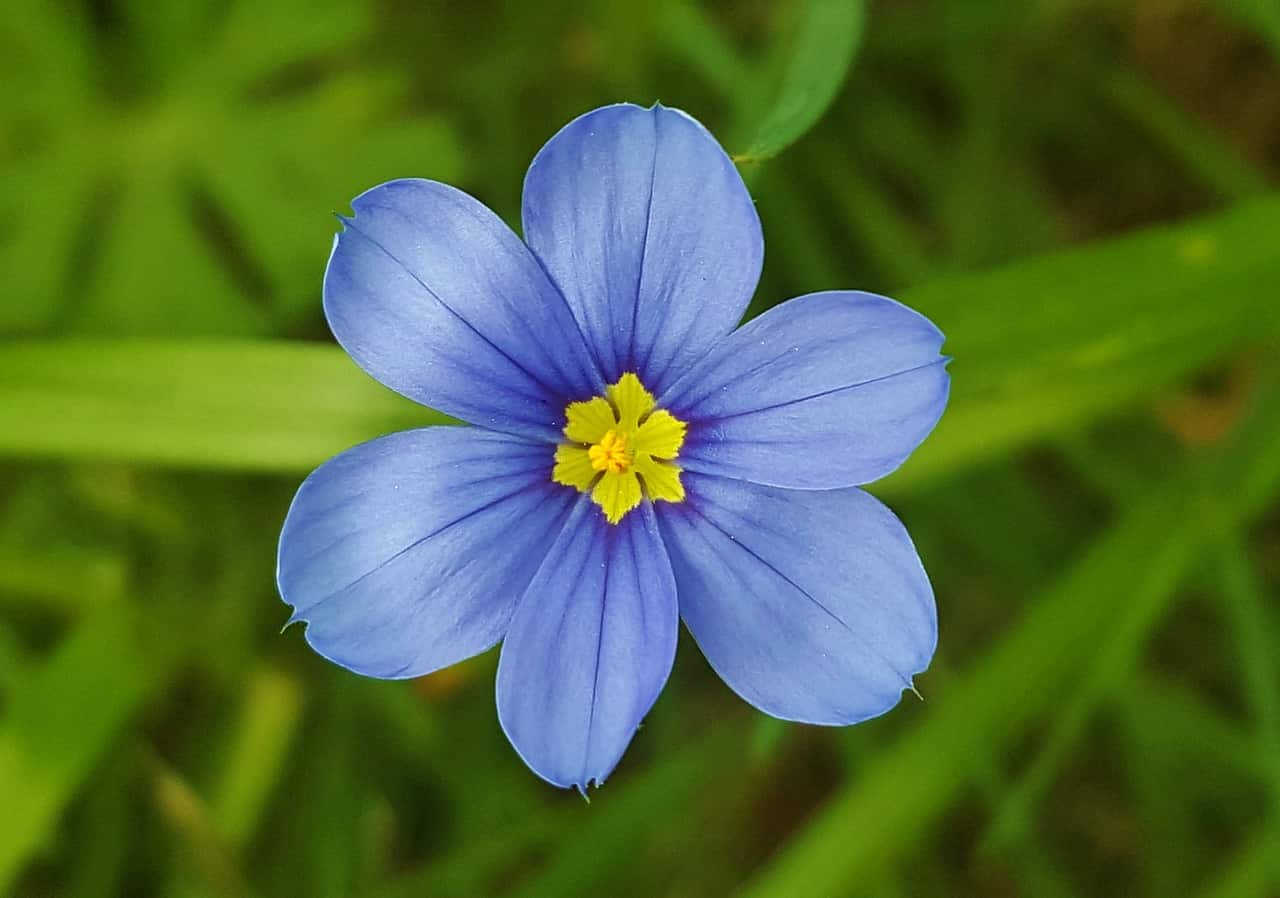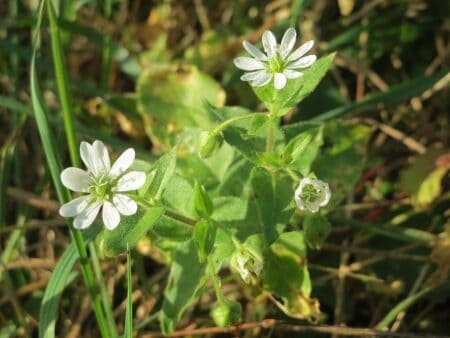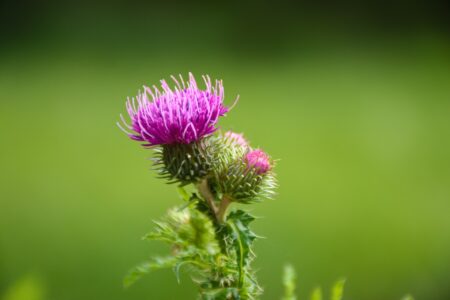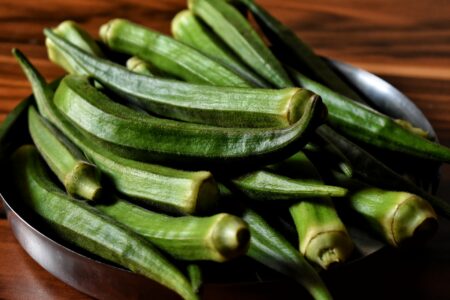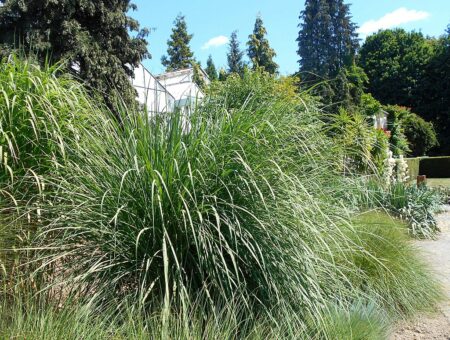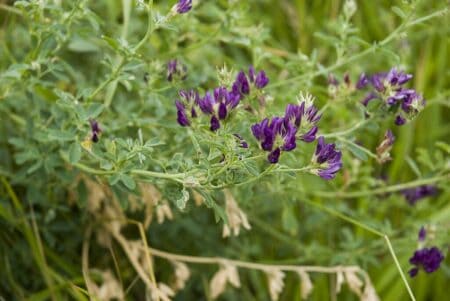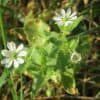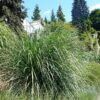Meet the blue-eyed grass, a native wildflower that blooms in spring and summer with delicate purple petals and yellow centers.
You are about to discover why this plant deserves a spot in your landscape and how to care for it with minimal fuss.
Whether you want to attract butterflies, create a natural meadow, or just enjoy some cheerful color, blue-eyed grass can help you achieve your gardening goals.
What Is Blue-Eyed Grass?
Despite its name, Blue-eyed Grass isn’t actually grass. It’s a perennial flower that belongs to the iris family.
The plant grows up to 12 inches (30 cm) tall and features long, slender green and grass-like leaves.
The leaves form dense clumps around the base of the plant, and they remain green throughout the year.
Blue-eyed flowers come in shades of blue, violet, white, or yellow, depending on the species.
Blue-eyed grass is native to North America and the Caribbean, and some species have naturalized in other parts of the world.
There are over 75 species of blue-eyed grass, each with its own characteristics and preferences.
Some of the most common ones are:
- Common blue-eyed grass (Sisyrinchium angustifolium): This species has violet-blue flowers that bloom in late spring and early summer. It grows up to 20 inches (50 cm) tall and prefers moist, well-drained soil and full sun to partial shade. It is hardy in zones 4 to 9.
- Western blue-eyed grass (Sisyrinchium bellum): This species has blue to purple flowers that bloom from winter to spring. It grows up to 12 inches (30 cm) tall and tolerates dry conditions and clay soil. It is hardy in zones 7 to 8.
- Blue pigroot (Sisyrinchium micranthum): This species has white to pale blue flowers that bloom in summer. It grows up to 16 inches (40 cm) tall and likes moist, fertile soil and full sun. It is hardy in zones 8 to 10.
- Pale yellow-eyed grass (Sisyrinchium striatum): This species has creamy white flowers that bloom in late spring and early summer. It grows up to 35 inches (88 cm) tall and prefers moist, acidic soil and partial shade. It is hardy in zones 7 to 8.
Benefits of Growing Blue-Eyed Grass
Blue-eyed grass is a great plant for adding color and texture to your garden.
Here are some of the benefits of growing this plant:
- It attracts butterflies, bees, and other pollinators with its nectar-rich flowers.
- It forms dense clumps that can be used as a ground cover or edging for borders and paths.
- Growing and caring for is easy if you provide enough moisture and drainage.
- It is resistant to deer, rabbits, insects, and diseases.
- It can be propagated by seeds or division.
Blue-eyed grass can be grown for its ornamental value as well as for its medicinal and culinary uses. Some Native American tribes used the roots and leaves of blue-eyed grass to remedy stomach aches, colds, fevers, and wounds. The flowers and seeds of some species are edible and can be added to salads or teas.
How To Plant Blue-Eyed Grass?
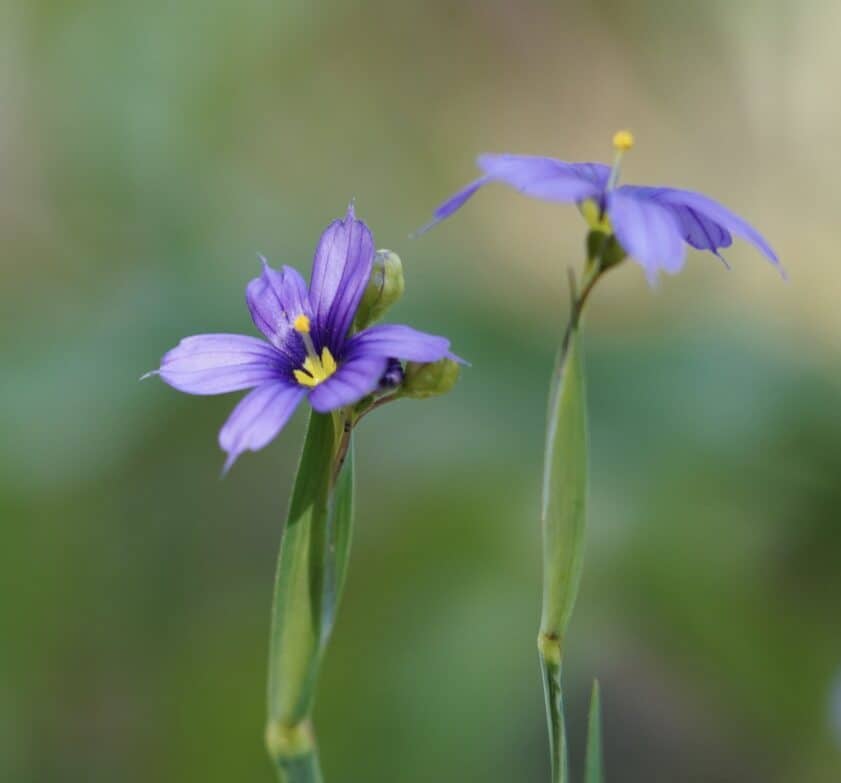
The best time to plant blue-eyed grass is in early spring, after the last frost.
You can also plant it in the fall, but make sure to mulch it well to protect it from the cold.
Where To Plant Blue-Eyed Grass?
Blue-eyed grass likes full sun or partial shade.
It can tolerate some drought but prefers moist soil. It also needs well-drained soil, as it does not like wet feet.
You can plant blue-eyed grass in borders, rock gardens, meadows, or containers.
Planting Blue-Eyed Grass
You can start blue-eyed grass from seeds, plants, or divisions:
- Seeds can be sown directly in the ground or indoors in pots.
- Plants can be bought from nurseries or online.
- Divisions can be made from existing plants in spring or fall.
Dig a hole twice as wide and deep as the root ball to plant blue-eyed grass. Place the plant in the hole and fill it with soil.
Water well and add some mulch around the base. Space the plants about 6 to 12 inches (15-30 cm) apart.
If planting from seed, sow them about 1/8 inch (0.3 cm) deep and keep the soil consistently moist until germination, which typically takes two to three weeks.
How To Care for Blue-Eyed Grass?
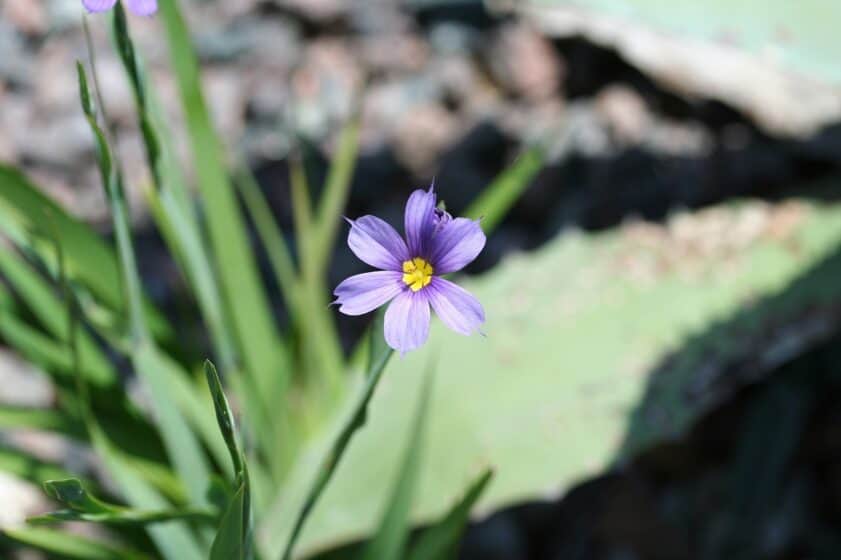
Let’s look closer at how to care for Blue-eyed Grass, including tips on watering, fertilizing, pruning, and propagating this delightful plant.
Watering Blue-Eyed Grass
Blue-eyed Grass prefers well-draining soil that’s consistently moist but not waterlogged.
Water your Blue-eyed Grass deeply once a week during dry periods, and adjust the frequency based on the weather conditions.
It’s best to water in the morning or evening when temperatures are cooler and the sun isn’t as intense.
Be sure to avoid overhead watering, which can promote fungal diseases.
Fertilizing Blue-Eyed Grass
Blue-eyed grass does not need much fertilizer and can grow well in poor soils.
However, you can give it a boost of nutrients once or twice a year, preferably in spring and summer.
How To Fertilize Blue-Eyed Grass?
Use a balanced organic fertilizer that is low in nitrogen and high in phosphorus and potassium.
This will promote flowering and root development.
Apply the fertilizer either by sprinkling it around the base of the plant or by mixing it with water and watering it.
Pruning Blue-Eyed Grass
Pruning your blue-eyed grass is unnecessary, but it can help maintain its shape and appearance.
You can also remove any dead or diseased parts of the plant to prevent infection and improve air circulation.
How To Prune Blue-Eyed Grass?
The best time to prune your blue-eyed grass is after flowering, usually in late summer or early fall.
Use sharp and clean scissors or pruning shears to prune your blue-eyed grass.
Cut back the stems to about half their length or height. You can also thin out some stems to create more space between them.
Common Problems With Blue-Eyed Grass
Blue-eyed grass is generally hardy and can tolerate various conditions. However, it may encounter problems that can affect its growth and health.
Here are some common issues with blue-eyed grass and how to deal with them.
Pests
Aphids, spider mites, or slugs may attack blue-eyed grass.
These pests can suck the sap from the leaves and stem, causing them to wilt or curl.
To control them, spray the plant with insecticidal soap or neem oil or pick them off by hand.
Diseases
Fungal diseases like powdery mildew or rust may also infect blue-eyed grass.
These diseases can cause white or brown spots on the leaves and reduce flowering.
You can keep the plant well-ventilated to prevent them and avoid overwatering or overhead watering.
You can also apply a fungicide if the infection is severe.
Environmental Stress
Blue-eyed grass may suffer from environmental stress, such as extreme temperatures, drought, or poor soil.
These factors can cause the plant to wilt, yellow, or drop its flowers.
To avoid them, you can provide the plant with adequate water, mulch, and fertilizer.
You can also protect the plant from frost or heat by covering it with a cloth or moving it indoors.
Invasive Growth
Blue-eyed grass may become invasive in some areas, especially if planted in moist and fertile soil.
It can spread quickly by seeds or rhizomes and crowd out other plants.
To control its growth, you can remove any unwanted seedlings or runners. You can also plant it in containers or areas with natural barriers.
Conclusion
Blue-eyed grass is more than just a pretty face.
It’s a tough and versatile plant that can brighten up any garden.
You can enjoy its lovely flowers for a long time with a bit of care and attention.
So why not try Blue-eyed Grass and enjoy its beauty for years to come?

